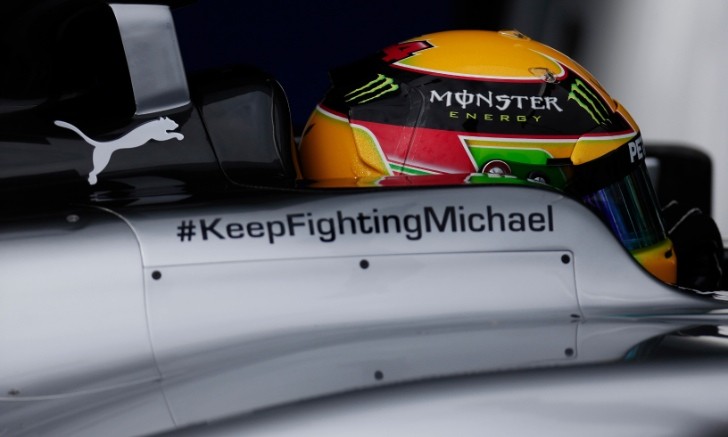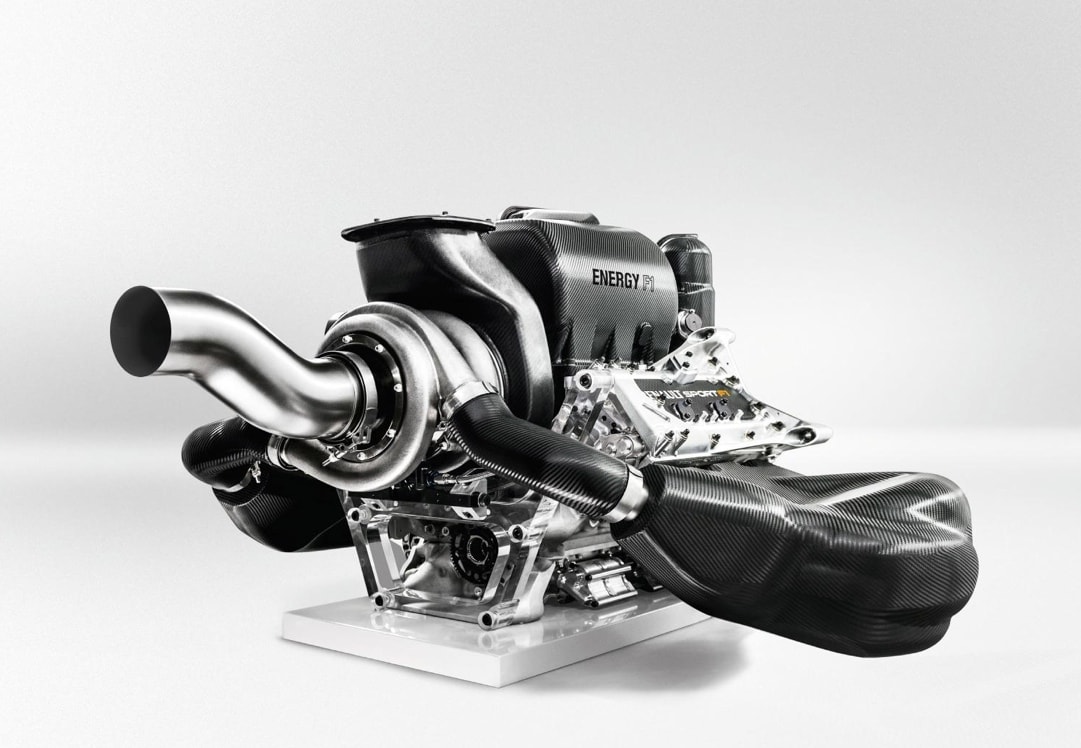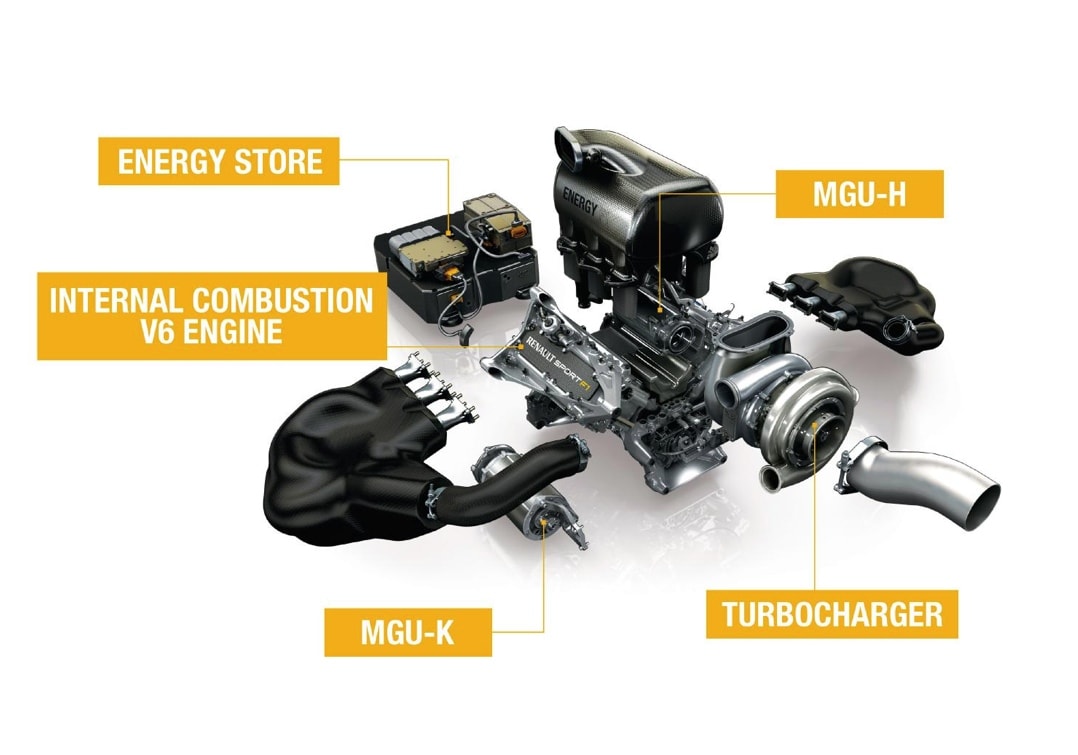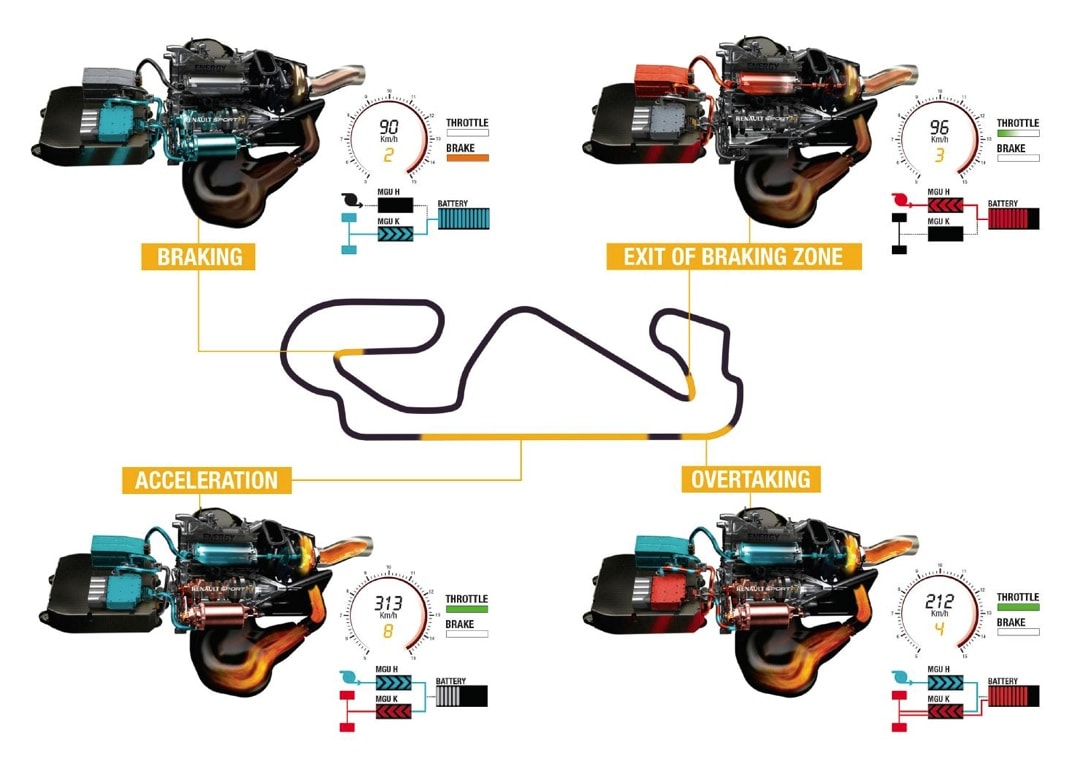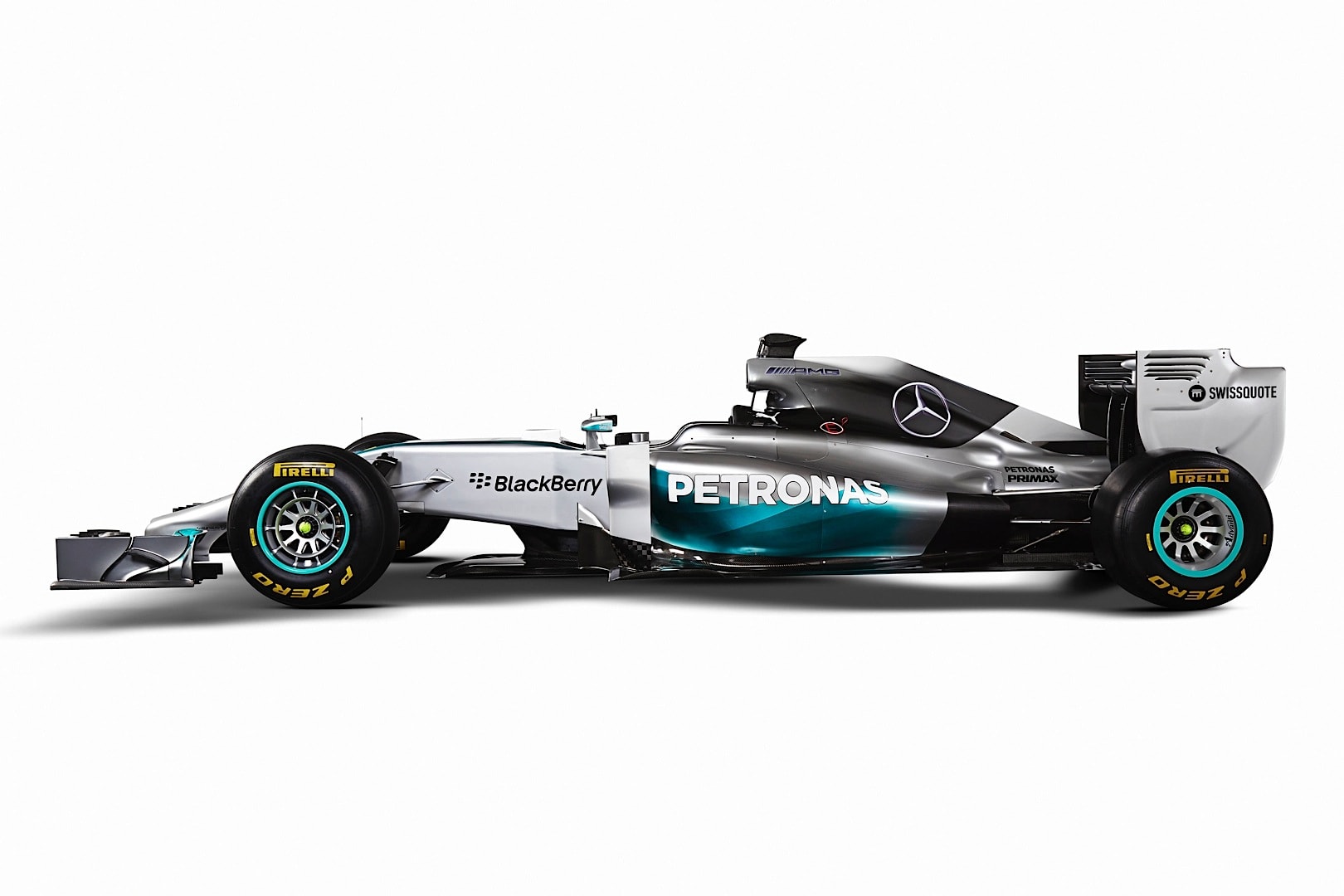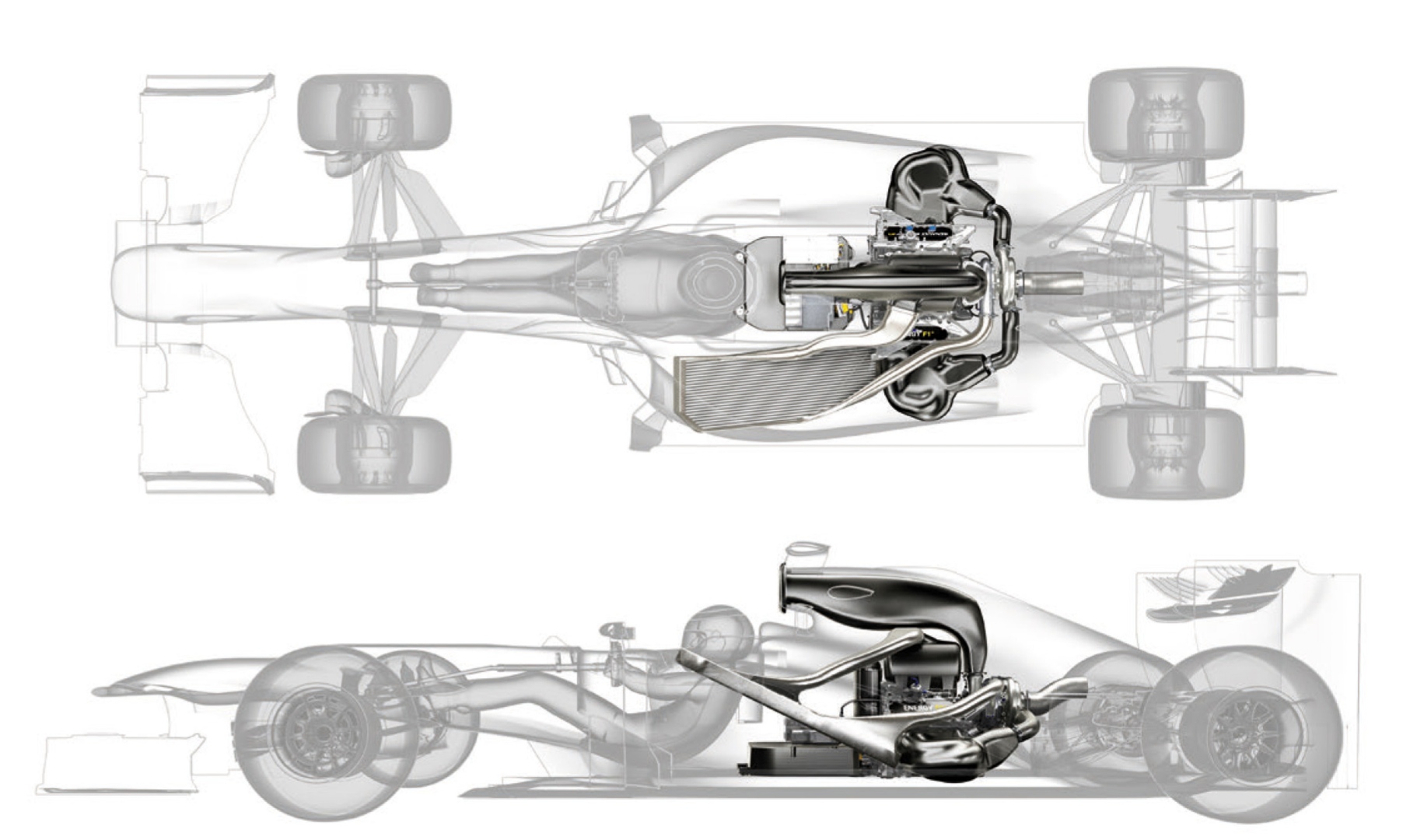With a little over a month until the 2014 season of the Formula 1 championship starts, there are still a lot of people out there who aren't yet up-to-date to the new rules and regulations that FIA has imposed both on the F1 teams and on the drivers.
Let's start with the cars first, as their insides have been so thoroughly re-worked compared to the 2013 season (and any other F1 season, for that matter) that there are very few things remaining to remind engineers of the fact that they are still developing cars for Formula 1.
In 2014, all single-seaters will be powered by a newly-developed, 1.6-liter, turbocharged V6 engine and not one but two Energy Recovery Systems (ERS) that are no longer controlled by the driver but by the engine management computer.
Sadly, at least in the beginning of the season, the new “hybrid power units” - as the teams call them now – will be less powerful than last year's V8s, with the total output of the turbocharged V6 to be in the vicinity of 600 hp, with around 160 of extra horsepower brought by the two ERS systems for close to 33 seconds on every lap.
The overall torque of the powerplants will be much higher though, as both a turbocharger and an electric engine are involved in the entire operation.
In short, the new “hybrid power units” consist of six separate elements all working together:
According to the new regulations, if any driver will use more than five of any of the above components he will be facing a penalty that may be either a drop of five places on the starting grid or actually starting the race from the pit lane.
Compared to previous seasons, each car has a 100 kilograms fuel limit per race, while the fuel flow is limited to 100 kilograms per hour if the engine is running at over 10.500 rpm. This should lead to a some pretty interesting racing strategies, especially since the race refueling ban is still in place.
As far as transmissions go, 2014 cars will have semi-automatic gearboxes with eight forwards speeds instead of the previous seven, while the teams will have to preset their gear ratios before the first race at Melbourne and keep them unchanged until the end of the season.
A single change of the ratios is allowed during the entire season, after which any extra change will incur penalties, so it should be fun to see how the ratios used at Spa will fare on the busy and twisty streets of Monte Carlo.
On top of that, each gearbox will have to be used for six consecutive races, with every unscheduled transmission change making the driver drop five places on the grid.
The minimum weight of a car and its driver has been increased to 690 kilograms to make room for the added weight of the battery, the ERS and their cooling systems.
Skipping the already highly-talked-about penis noses and their raison d'être, you might want to learn about the rules and regulations concerning the drivers as well.
Drivers will be receiving a race ban after accumulating twelve penalty points, with an additional five penalty points to be received after returning form the race ban as a “probation”. All existing points will be removed from the drivers' “criminal record” at the end of the season.
Another somewhat amusing addition will be the introduction of a “Pole Trophy” which, despite its name, has nothing to do with either strippers or pole dancing. The prize will be instead awarded to the driver who manages to snatch the highest number of pole position qualifications at the end of the championship.
In order to somewhat alleviate the severity of drive-throughs or stop and gos, race stewards will now have the power to hand out five-second penalties for minor offenses, leading to a much broader range of in-race penalties.
For example, in case of regular pit stops, the penalized cars will need to stop for five seconds before any type of work is done by the team, be it change of tires or replacement of broken parts.
Apart from number one, which is still reserved for the reigning world champion, every driver will choose their car number for the rest of their career in Formula 1.
Last, but certainly not least in terms of importance, the last race of the 2014 season will offer double points for the drivers championship, meaning that second or even third-placed drivers in the standings might still have a shot at the title in Abu Dhabi.
Car-related Rules and Regulations
First of all, we are talking about the death of the 2.4-liter naturally-aspirated V8 engine, which was assisted by a KERS (Kinetic Energy Recovery System) for just a few seconds per lap back in 2013.In 2014, all single-seaters will be powered by a newly-developed, 1.6-liter, turbocharged V6 engine and not one but two Energy Recovery Systems (ERS) that are no longer controlled by the driver but by the engine management computer.
Sadly, at least in the beginning of the season, the new “hybrid power units” - as the teams call them now – will be less powerful than last year's V8s, with the total output of the turbocharged V6 to be in the vicinity of 600 hp, with around 160 of extra horsepower brought by the two ERS systems for close to 33 seconds on every lap.
The overall torque of the powerplants will be much higher though, as both a turbocharger and an electric engine are involved in the entire operation.
In short, the new “hybrid power units” consist of six separate elements all working together:
- 1.6-liter V6 engine
- turbocharger (TC)
- motor generator unit-kinetic (MGU-K)
- motor generator unit-heat (MGU-H)
- energy store, or battery (ES)
- control electronics (CE)
According to the new regulations, if any driver will use more than five of any of the above components he will be facing a penalty that may be either a drop of five places on the starting grid or actually starting the race from the pit lane.
Compared to previous seasons, each car has a 100 kilograms fuel limit per race, while the fuel flow is limited to 100 kilograms per hour if the engine is running at over 10.500 rpm. This should lead to a some pretty interesting racing strategies, especially since the race refueling ban is still in place.
As far as transmissions go, 2014 cars will have semi-automatic gearboxes with eight forwards speeds instead of the previous seven, while the teams will have to preset their gear ratios before the first race at Melbourne and keep them unchanged until the end of the season.
A single change of the ratios is allowed during the entire season, after which any extra change will incur penalties, so it should be fun to see how the ratios used at Spa will fare on the busy and twisty streets of Monte Carlo.
On top of that, each gearbox will have to be used for six consecutive races, with every unscheduled transmission change making the driver drop five places on the grid.
The minimum weight of a car and its driver has been increased to 690 kilograms to make room for the added weight of the battery, the ERS and their cooling systems.
Skipping the already highly-talked-about penis noses and their raison d'être, you might want to learn about the rules and regulations concerning the drivers as well.
Driver-related Rules and Regulations
For the first time ever in the history of Formula 1, penalty points for driving offenses will be introduced in 2014, which will be counted over the course of the championship.Drivers will be receiving a race ban after accumulating twelve penalty points, with an additional five penalty points to be received after returning form the race ban as a “probation”. All existing points will be removed from the drivers' “criminal record” at the end of the season.
Another somewhat amusing addition will be the introduction of a “Pole Trophy” which, despite its name, has nothing to do with either strippers or pole dancing. The prize will be instead awarded to the driver who manages to snatch the highest number of pole position qualifications at the end of the championship.
In order to somewhat alleviate the severity of drive-throughs or stop and gos, race stewards will now have the power to hand out five-second penalties for minor offenses, leading to a much broader range of in-race penalties.
For example, in case of regular pit stops, the penalized cars will need to stop for five seconds before any type of work is done by the team, be it change of tires or replacement of broken parts.
Apart from number one, which is still reserved for the reigning world champion, every driver will choose their car number for the rest of their career in Formula 1.
Last, but certainly not least in terms of importance, the last race of the 2014 season will offer double points for the drivers championship, meaning that second or even third-placed drivers in the standings might still have a shot at the title in Abu Dhabi.
